The best cryptos to mine right now are Bitcoin (BTC), Monero (XMR), Litecoin (LTC), Zcash (ZEC), Ravencoin (RVN), Vertcoin (VTC), Dash (DASH), Ethereum Classic (ETC), Dogecoin (DOGE), and Grin (GRIN). To decide the best cryptocurrencies to mine, we explored power costs, network difficulty, liquidity and exchange support, and project longevity.
Although crypto mining can be profitable, it is important to know that there is no assurance of making a profit. This is because mining a crypto successfully and earning rewards in the process depends on various factors, which we will discuss in detail further in this article.
In addition to profitability, this guide will review the most profitable crypto to mine based on their mining rewards per block, hardware requirements, difficulty trend, and pros and cons. We will also provide a clear guide on how to start mining crypto in 2025.
What Are the Best Cryptos to Mine Right Now?
Before diving into the best crypto to mine right now, let’s compare them side-by-side based on hardware requirements, mining rewards, and mining difficulty.
| Crypto | Mining Reward/Per Block | Hardware Requirement | Difficulty |
| Bitcoin (BTC) | 3.125 BTC | ASIC miners | Very hard |
| Monero (XMR) | 0.6 XMR | CPU & GPU mining (RandomX) | Easy |
| Litecoin (LTC) | 6.25 LTC | ASIC miners | Hard |
| Zcash (ZEC) | 1.5625 ZEC | GPU or more efficient ASIC miners | Moderate |
| Ravencoin (RVN) | 2,500 RVN | GPU (KAWPOW) | Easy |
| Vertcoin (VTC) | 12.5 VTC | CPU or GPU (ASIC-resistant) | Easy |
| Dash (DASH) | 2.3097 DASH | GPU and ASIC miners (recommended). | Moderate |
| Ethereum Classic (ETC) | 2.048 ETC | GPU/ASIC recommended | Moderate |
| Dogecoin (DOGE) | 10,000 DOGE | ASIC | Moderate |
| Grin (GRIN) | 60 GRIN | GPU (ASIC-resistant) | Easy/Moderate |
1. Bitcoin (BTC)
Bitcoin is the world’s most popular and widely traded cryptocurrency, and it’s also the first name that comes to mind when people think of mining. This is because it was the first cryptocurrency to use mining for securing its blockchain in 2009. Over time, it has become the most liquid crypto asset in the world, traded on virtually every exchange.
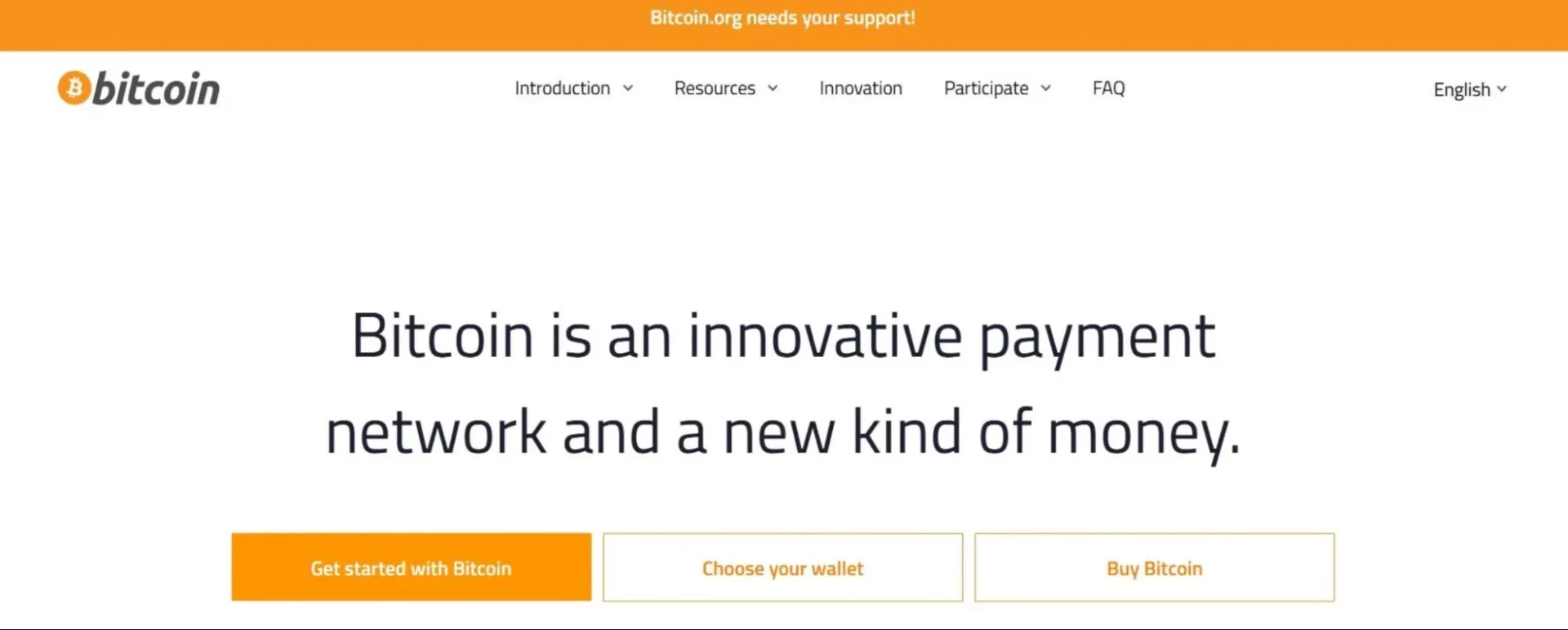
Quick Facts About Bitcoin Mining
Mining Reward Schedule and Halving: Bitcoin mining rewards started at 50 BTC per block in 2009. However, it is cut in half roughly every four years (every 210,000 blocks). The reward is currently 3.125 BTC per block after Bitcoin halved in 2024, and the next Bitcoin halving in 2028 will bring it down to 1.5625 BTC. General Difficulty Trend: Very hard. Bitcoin’s mining difficulty automatically adjusts every 2,016 blocks (about every two weeks) to keep block times close to 10 minutes. In 2009, difficulty was set at 1; by mid-2025, it had reached the trillions.How to Mine Bitcoin
Here is a straightforward process on how to set up and start mining BTC:
Choose Wallet: Select a secure crypto wallet to store your mined Bitcoin safely. Pick a Reputable Pool: Since ASIC miners are expensive (usually around $10,000), join a reliable mining pool to combine efforts with other miners and improve the chances of earning rewards consistently. Pools differ by fees, payout methods, and hash power, so research and compare various pools before choosing one. Download Supported Software: Get mining software compatible with your hardware and pool. This software manages your mining rig and connects it to the pool. Start and Monitor: Install and configure the software with your wallet address and pool info. Start mining and regularly monitor your rig’s performance, power usage, and mining rewards for optimal efficiency.Pros and Cons of Bitcoin Mining
The pros of Bitcoin mining are:
Potential passive income stream for miners with the proper setup. Its proof-of-work network is one of the most secure blockchains in the world. Miners validate transactions and secure the Bitcoin blockchain through the Proof of Work mechanism.The cons of BTC mining are:
Mining is energy-intensive, and the electricity costs to run your rig significantly impact profitability. Initial investment in specialized hardware (ASIC miners) is expensive and can be a barrier to entry for most miners, except those who opt to join a mining pool.Who it’s for: Bitcoin mining is best suited for long-term believers and those who want to support and secure the Bitcoin network while earning rewards. It is also suitable for individuals or businesses who have the technical ability to run specialized hardware.
2. Monero (XMR)
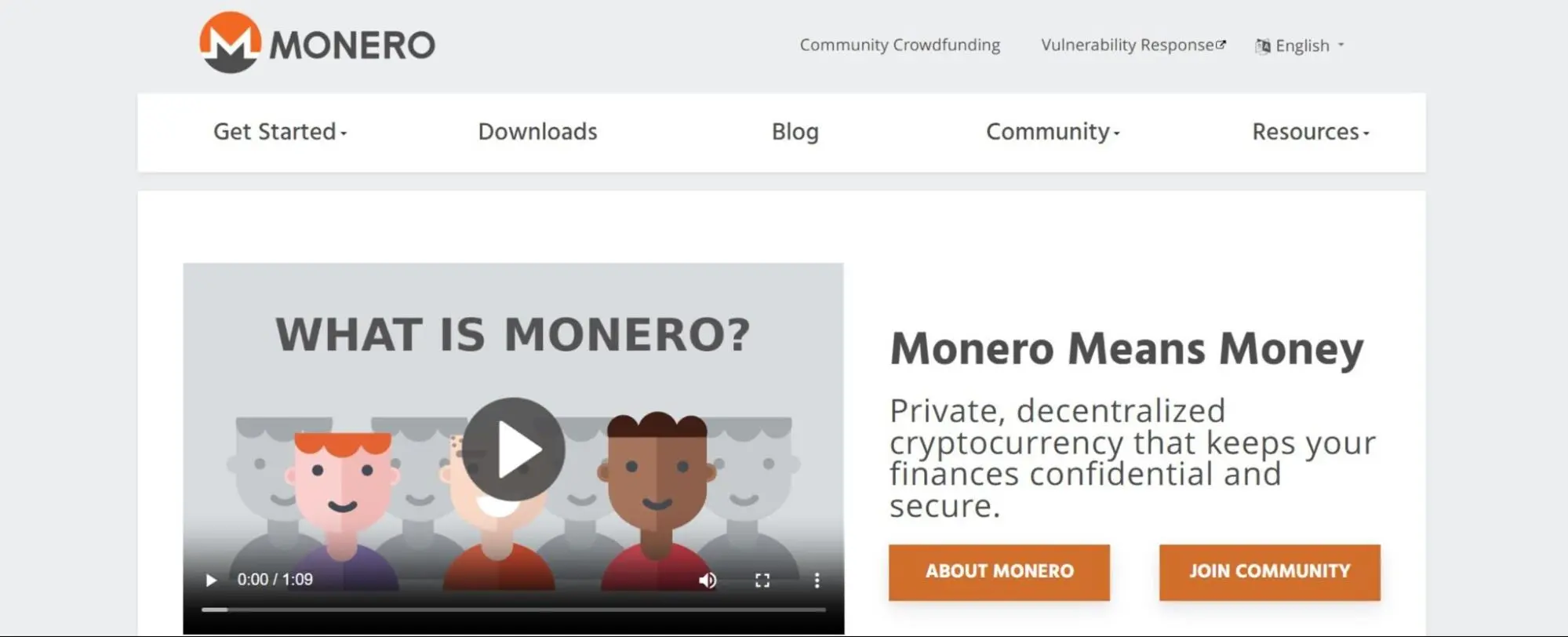
Monero is a privacy-focused blockchain that enables completely anonymous and untraceable transactions. Unlike other blockchains, Monero currently uses RandomX, which is a PoW algorithm that is ASIC-resistant. Therefore, Monero miners can compete using affordable CPUs and GPUs.
Quick Facts About Monero
Monero (XMR) was launched in April 2014 as a fork of Bytecoin. It uses advanced cryptographic technologies such as ring signatures and stealth addresses to ensure transactions are confidential and untraceable.
Reward Schedule: 0.6 XMR per block. No traditional halving cycle, but block reward decreases gradually until it reaches what’s called the tail emission. This tail emission began in May 2022, ensuring that miners always receive 0.6 XMR per block (plus transaction fees). Difficulty: EasyHow to Mine Monero
Select a Monero-supported wallet to securely store mined XMR. Compare various mining pools like SupportXMR, MineXMR, or MoneroOcean, and choose one to pool computational power and potentially earn more consistent rewards. Choose a mining software that supports CPU and GPU mining. Configure the software with your wallet address and pool details. Launch the miner, monitor system performance, and regularly check mining progress.Pros and Cons of Mining Monero
The pros of Monero include:
Privacy-centric with high anonymity for transactions. Accessible mining using CPUs without the need for expensive ASIC hardware. Relatively easy setup for beginners.The cons of Monero are:
Lower profitability on older or less powerful hardware. Dependent on electricity costs, which can make mining uneconomical in some regions. Market price volatility affects mining returns.Who it’s for: Monero is ideal for users who prioritize transaction privacy and anonymity. It is also perfect for miners who want to mine with consumer-grade CPUs rather than specialized hardware.
3. Litecoin (LTC)
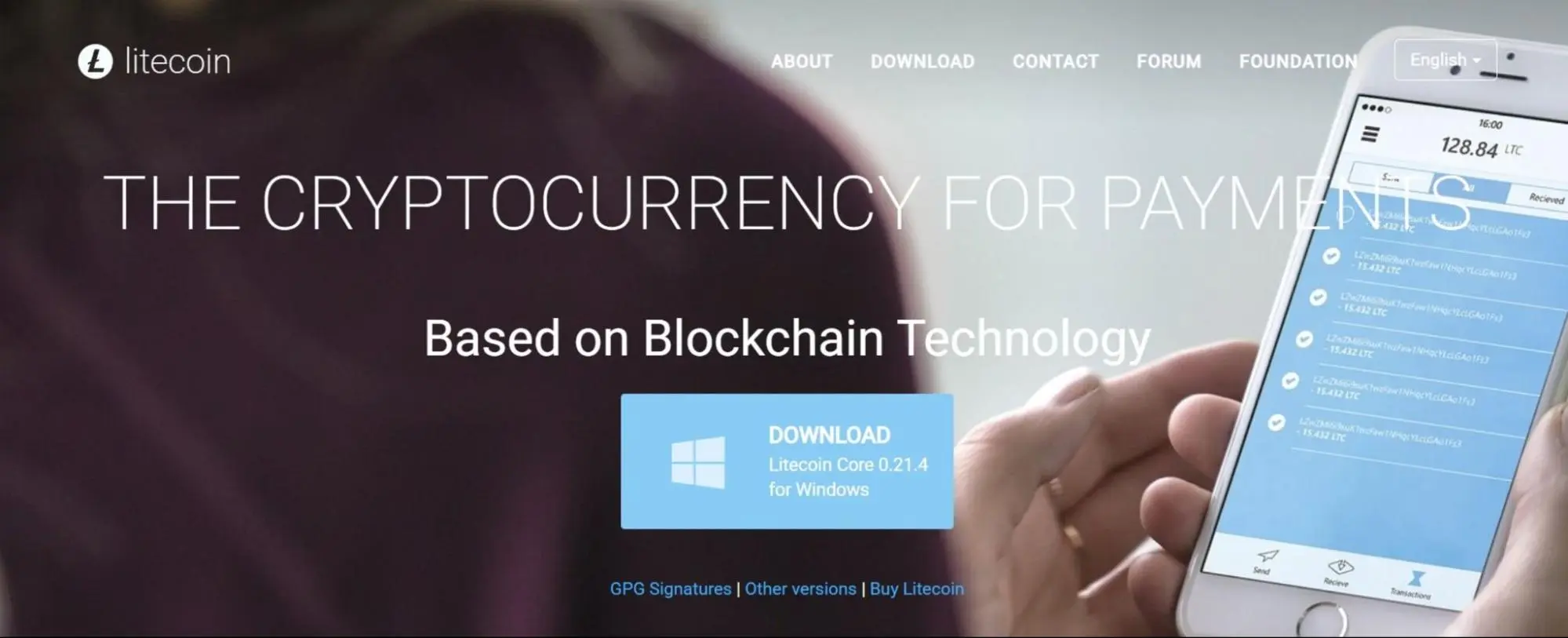
Litecoin is an open source peer-to-peer cryptocurrency that allows investors to carry out near instant transactions. Like Bitcoin, Litecoin has been around for over a decade, is one of the most liquid cryptocurrencies, and is widely traded on virtually every exchange. Unlike Bitcoin, the Litecoin blockchain has faster transaction confirmation times, with a block time of 2.5 minutes, compared to Bitcoin’s 10 minutes.
Quick Facts About Litecoin
Reward Schedule: Litecoin undergoes a halving event approximately every four years or every 840,000 blocks mined. The initial block reward was 50 LTC per block when Litecoin launched in 2011. After the most recent halving event on August 2, 2023, the reward was reduced from 12.5 LTC to 6.25 LTC. The next projected halving is scheduled for around July 27, 2027, when the reward will decrease to 3.125 LTC per block. Difficulty: HardTo mine Litecoin, set up an account on a supported wallet that you can use to store mined LTC. After that, research and select a reputable mining pool, choose your preferred mining software, and then proceed to mine with the software and monitor your hardware performance often.
Pros and Cons of Mining Litecoin
The pros of Litecoin are:
Faster transaction speed (2.5 min blocks) Lower transaction fees Supports privacy features (MimbleWimble)The cons of mining Litecoin are:
Difficult for at-home miners to compete with large-scale miners because it requires the use of ASIC miners. Lower market cap compared to Bitcoin Halving events have less impact than Bitcoin’sWho it’s for: Litecoin is suitable for miners seeking a faster and cheaper alternative to Bitcoin for everyday payments and transfers.
4. Zcash (ZEC)
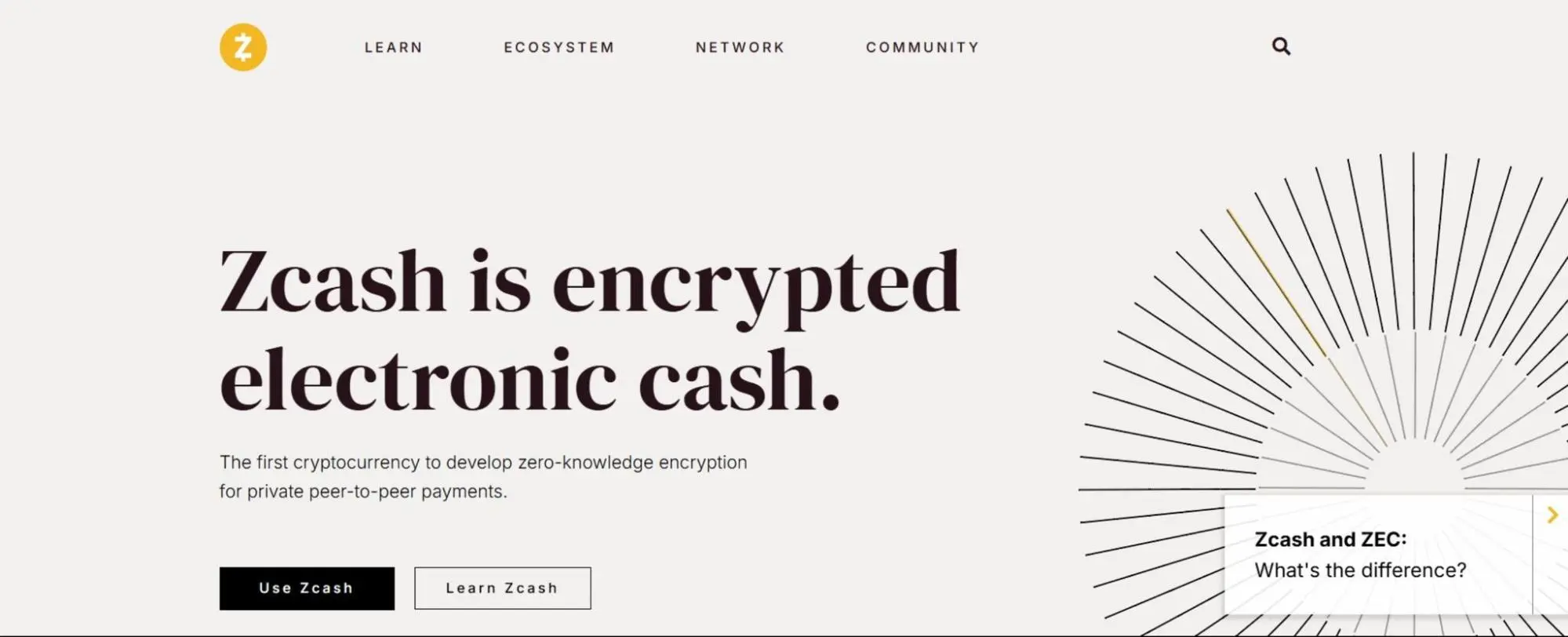
Zcash (ZEC) is a privacy-focused coin that prioritizes anonymity in transactions by using zero-knowledge proofs. It is based on Bitcoin’s code with added privacy features to shield transaction details while maintaining a secure blockchain. While it is possible to mine Zcash with GPUs, you will be less likely to make a profit because the Zcash community voted against prioritizing ASIC resistance in the protocol. Hence, ASIC mining tends to be more profitable.
Quick Facts About Zcash
Reward Schedule: 1.5625 ZEC. Block rewards are paid to miners who solve cryptographic puzzles first; these rewards halve roughly every four years, like Bitcoin’s. Difficulty: ModerateTo mine Zcash (ZEC), choose a secure wallet to store mined coins, then pick a reputable mining pool and download mining software compatible with Equihash and your hardware. Once these are set, start mining with your configured setup and monitor performance via pool dashboards or dedicated software.
Pros and Cons of Mining Zcash
The pros of mining Zcash are:
Strong privacy via zero-knowledge proofs. Good profitability potential with efficient hardware and low electricity costs. Secure cryptographic design.The cons of mining Zcash are:
High upfront costs for mining rigs, especially ASICs. Regulatory uncertainties around privacy coins like Zcash. Mining profitability depends heavily on hardware and power costs.Who it’s for: Zcash mining is perfect for miners with access to affordable, efficient hardware (ASICs preferred) and those who value privacy-focused cryptocurrencies.
5. Ravencoin (RVN)
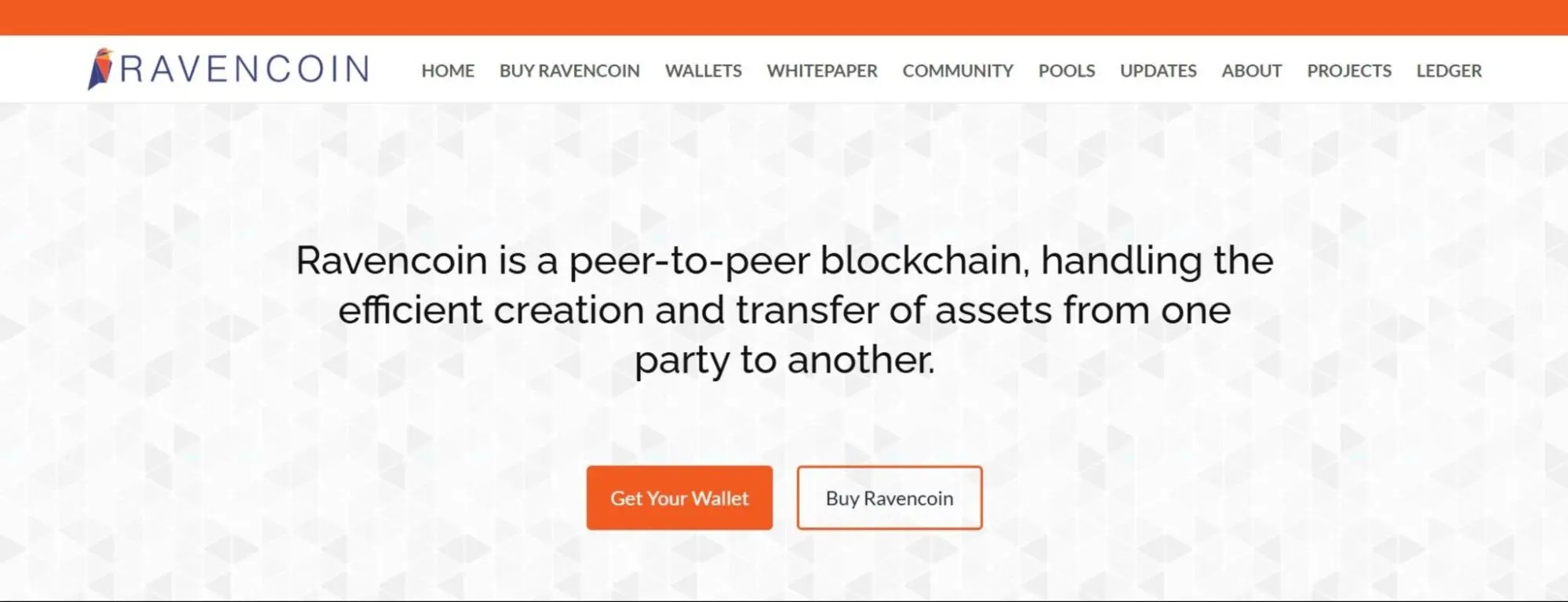
Ravencoin is a peer-to-peer blockchain focused exclusively on the creation and transfer of digital assets between parties. Unlike Bitcoin, Ravencoin is easily accessible to stay-at-home or low-scale miners since it is ASIC-resistant, meaning that miners can use CPUs and GPUs to mine the coin.
Quick Facts About Ravencoin
Ravencoin uses a new mining algorithm, KAWPOW (ASIC-resistant, GPU-friendly), which allows for more decentralized mining.
Reward Schedule: 2,500 RVN/block. Block rewards halve every 2,100,000 blocks (approximately 4 years), with the next halving expected around January 2026. Difficulty: EasyTo mine Ravencoin, set up a Ravencoin wallet to store mined RVN (official list of wallets available on the Ravencoin website) and pick a reputable mining pool. Next, download mining software compatible with Ravencoin’s KAWPOW algorithm, then configure the mining software with your pool and wallet info and start mining.
Pros and Cons of Mining Ravencoin
The pros of mining Ravencoin are listed below:
Community-driven and open-source project with a focus on asset transfer ASIC-resistant algorithm enables fairer mining opportunities for GPU miners Active development and strong use case in tokenized assetsThe cons of mining Ravencoin are listed below:
Mining profitability depends heavily on electricity costs and market price Competition from larger mining operations can reduce solo miners’ chancesWho it’s for: Ravencoin is for miners looking for an accessible asset with CPU and GPU-friendly mining. It is also ideal for investors interested in community-backed projects.
6. Vertcoin (VTC)
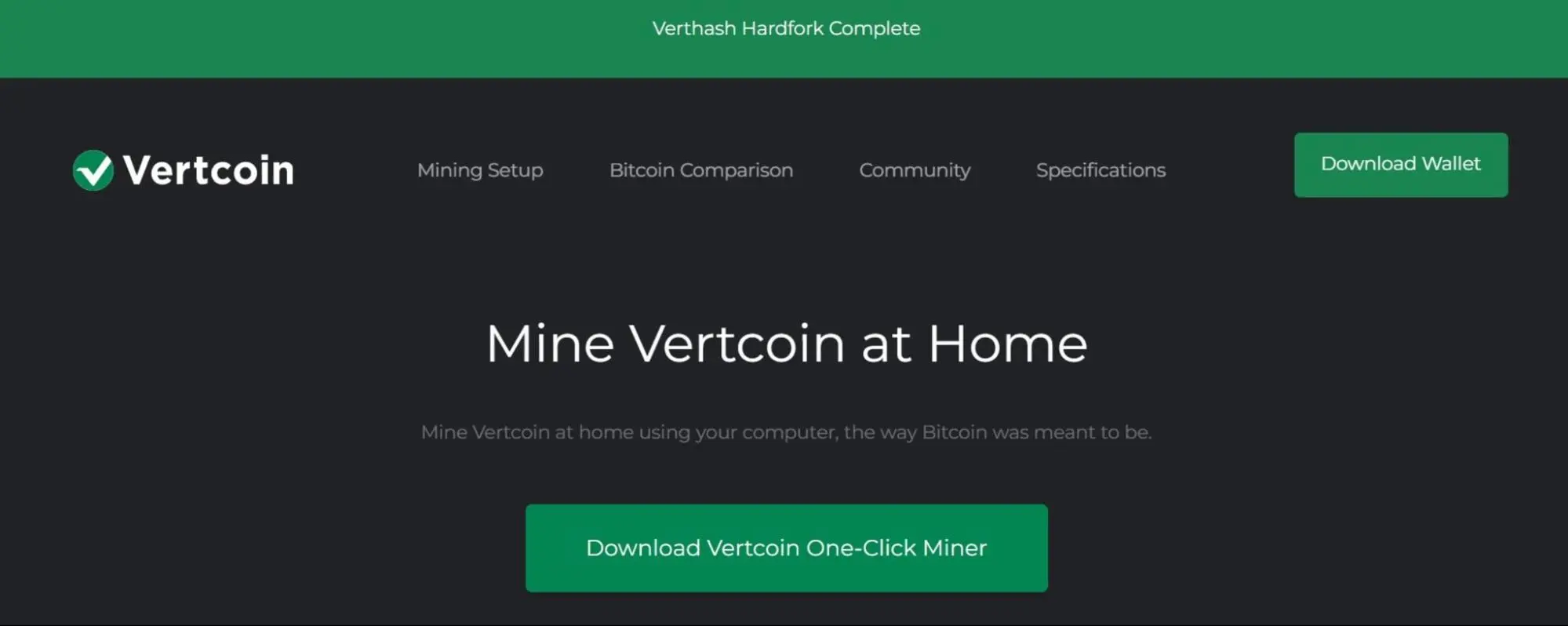
Vertcoin is another BTC variant, but it focuses on making mining accessible to everyday users by resisting ASIC mining technology to avoid centralizing mining power. Vertcoin’s mining difficulty adjusts based on network hash rate. Still, it remains manageable for GPU miners rather than escalating as seen in ASIC-dominated coins.
Quick Mining Facts
Rewards Schedule: 12.5 VTC/block. Vertcoin block rewards decrease over time, following a reward schedule similar to Bitcoin’s halvings. The coin is due to halve rewards from 12.5 VTC to 6.25 VTC in December 2025. Difficulty: EasyTo mine Vertcoin, you can follow the same simple process as with the other coins on our list. The difference is that you will need to set up a Vertcoin-supported wallet and install mining software that is compatible with your GPU.
Pros and Cons of Mining Vertcoin
The pros of mining Vertcoin include:
ASIC resistance Low entry cost Energy-efficient mining A strong community focusThe cons of mining Vertcoin (VTC) include:
Lower profitability compared to coins with wider adoption Less liquidity in exchanges.Who it’s for: Vertcoin mining is suitable for individuals who want an accessible and decentralized mining experience without investing heavily in ASICs.
7. Dash (DASH)
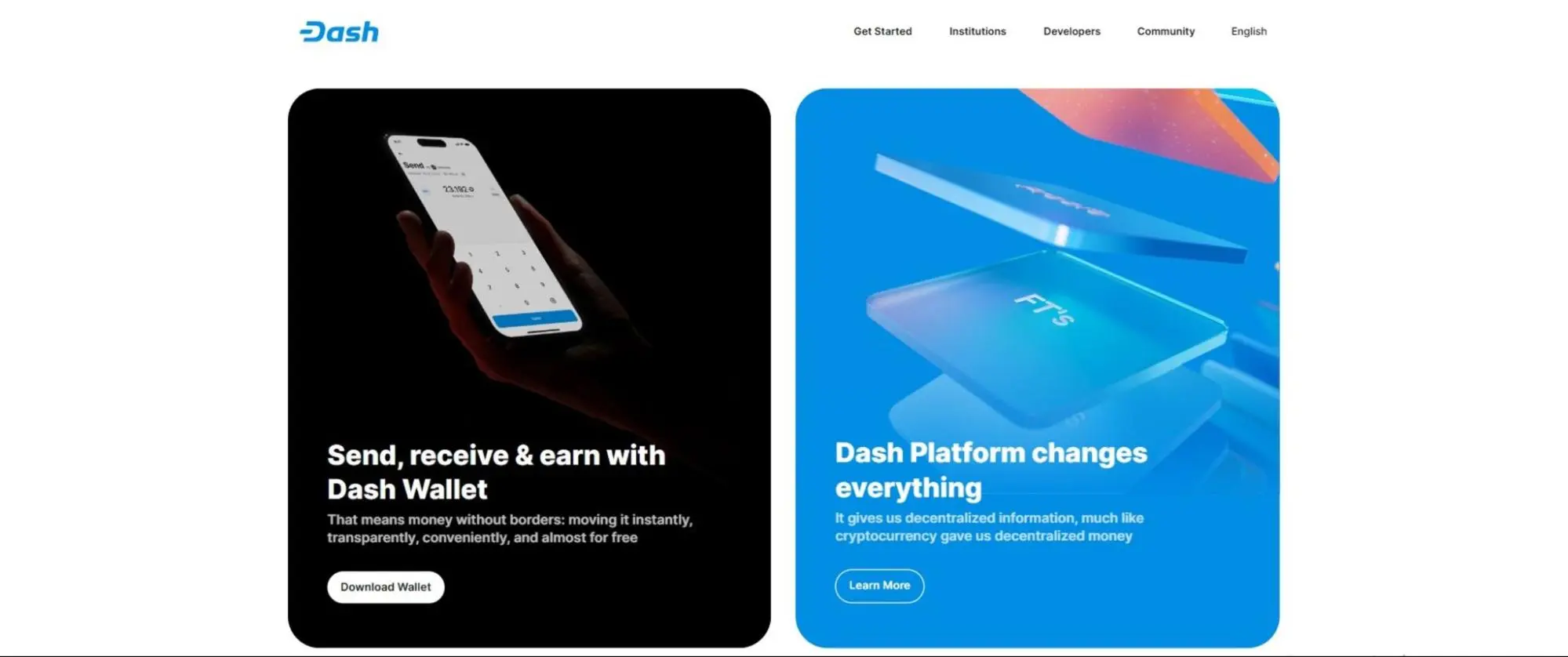
DASH is a cryptocurrency optimized for fast, secure, and low-cost payments. It launched in 2014, making the network about 11 years old as of 2025. The DASH network operates as a decentralized autonomous organization (DAO), where governance and treasury management are built into the protocol. This governance system enables the community to determine budget allocations and network improvements, which are funded by a portion of the block rewards set aside in a treasury.
Quick Mining Facts
Rewards Schedule: 2.3097 DASH (though it varies over time with scheduled reductions). Difficulty: ModerateTo mine DASH, set up an account on a supported wallet and join a mining pool (find available mining pools on DASH’s official website. Then install mining software configured for DASH’s X11 algorithm and start mining.
Pros and Cons of Mining DASH
The pros of mining DASH include:
Fast transaction confirmation (1-2 seconds), suitable for point-of-sale. Decentralized governance and treasury funding enable continuous network improvements. Strong community and DAO-driven development structure.The cons of mining DASH include:
DASH relies on ASIC miners. Although miners can use GPUs/CPUs, they are not as efficient. Governance voting power concentrated among Masternode holders (requires DASH stake).Who it’s for: Users and merchants who require fast, low-cost transactions with privacy features.
8. Ethereum Classic (ETC)
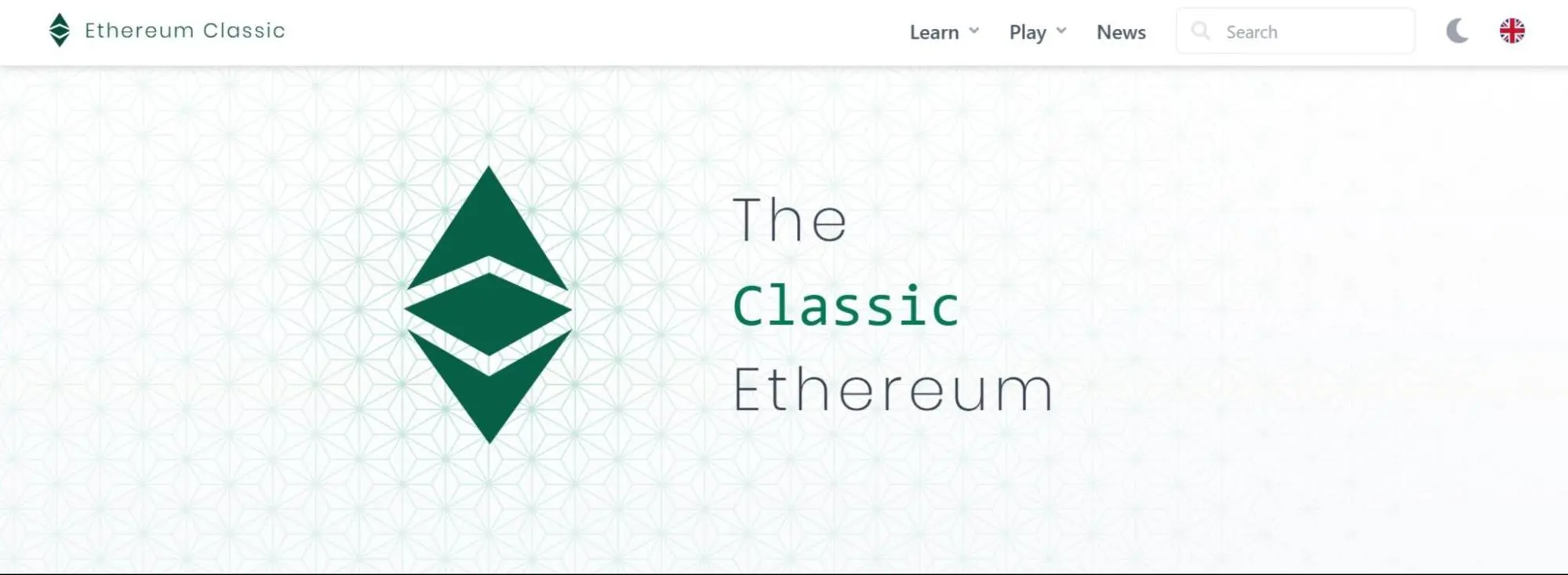
ETC is the original Ethereum blockchain that continued after Ethereum’s 2016 hard fork. Although the ETC network has experienced 51% attacks in the past, its security and stability have significantly improved since the 2020 Thanos Upgrade. In addition, ETC is supported by major exchanges, ensuring good liquidity and availability on most exchanges.
Quick Mining Facts
Rewards Schedule: 2.048 ETC. The ETC reward schedule, known as the “5M20” or “fifthening,” reduces the block reward by 20% every 5 million blocks (roughly every two years). The initial block reward was 4 ETC, and it was most recently reduced in June 2024, lowering the current reward to 2.048 ETC. Difficulty: ModerateHow to Mine Ethereum Classic
Choose an ETC-supported wallet to receive mining rewards Select a reputable mining pool, and configure your mining software with the pool URL and wallet address. Download ETC-supported mining software compatible with ETChash. Start mining and monitor performance through pool dashboards and optimize hardware settings (cooling, overclocking) as needed.Pros and Cons of Mining Ethereum Classic
The pros of mining ETC include:
Network stability and increasing hashrate since the 2020 upgrades. Supported on major exchanges, ensuring liquidity. It can be mined using GPUs, but ASIC miners improve the chances of profitability.The cons of mining ETC include:
History of 51% attacks, which pose some security concerns. Acquiring the necessary hardware, such as GPUs or ASICs, requires a significant upfront cost.Who it’s for: ETC mining is suited for GPU miners looking to mine on a stable, PoW smart contract platform with support from major exchanges.
9. Dogecoin (DOGE)

Dogecoin (DOGE) is a peer-to-peer, open-source cryptocurrency initially created as a parody of the crypto market in 2013, featuring the Shiba Inu dog meme. Despite its origins, it gained popularity due to community support, ease of use for microtransactions, and notable endorsements, including those from public figures and companies that integrated DOGE for payments.
Quick Mining Facts
Dogecoin mining is secured through a process called merged mining with Litecoin, leveraging the same Scrypt algorithm that Litecoin uses.
Rewards Schedule: Fixed at 10,000 DOGE/block. Mining rewards occur approximately every minute due to Dogecoin’s 1-minute block time. Difficulty: ModerateHow to mine Dogecoin
Select a Dogecoin-compatible wallet to store mined coins securely. Join a mining pool that supports Dogecoin/Litecoin merged mining. Download mining software that supports the Scrypt algorithm. Launch the mining software, connect to the pool with your wallet address, monitor performance (hashrate, temperature, power consumption), and track your rewards. Adjust settings to optimize efficiency.Pros and Cons of Mining Dogecoin
The pros of mining DOGE include:
Highly liquid with a market cap near $39.8 billion and daily trading volumes around $3.95 billion Active community and adoption Low entry barrier due to merged miningThe cons of mining DOGE include:
Price volatility is influenced by hype Unlimited supply leads to inflation pressureWho it’s for: Dogecoin mining is suitable for meme-coin enthusiasts and those who appreciate community-driven projects. However, miners seeking stable, high returns or long-term value storage might consider the risks associated with DOGE’s uncapped supply and market-driven price volatility.
10. Grin (GRIN)

GRIN is an open-source, privacy-focused cryptocurrency that implements the Mimblewimble protocol. This protocol provides high privacy and scalability by having no addresses or transaction amounts recorded on the blockchain, and it merges transactions to reduce data bloat and hide transaction history.
Quick Mining Facts
Users can mine Grin using GPU hardware, as it is designed to be ASIC-resistant.
Rewards Schedule: The mining reward is a constant 60 GRIN coins per block, yielding one coin per second indefinitely. Difficulty: Easy/ModerateHow to Mine Grin
Select a GRIN-compatible wallet (lightweight or full-node wallets supporting Mimblewimble features). Join a GRIN mining pool to increase chances of consistent mining rewards. Choose mining software compatible with your hardware and configure it with your wallet address and pool information. Launch the mining software, monitor your mining performance and rewards via the pool’s dashboard or software logs.Pros and Cons of Mining Grin
The pros of mining Grin include:
Strong privacy with no addresses or transaction amounts on-chain. Scalable blockchain that minimizes storage needs through Mimblewimble design. Decentralized, community-driven project without central control.The cons of mining Grin include:
As an experimental privacy coin, GRIN faces challenges such as variable liquidity and a high difficulty trend for mining over time. Increasing mining difficulty makes solo mining challenging without substantial resources.Who it’s for: GRIN is ideal for miners who prioritize transaction anonymity and blockchain efficiency above immediate liquidity or widespread adoption. So if you are willing to participate in an experimental coin with ongoing development and evolving network difficulty, GRIN might be perfect for you.
Is Crypto Mining Profitable in 2025?
Whether or not crypto mining is profitable for you depends on various factors, including electricity cost, hashrate/efficiency, network difficulty, liquidity/exchange support, and project longevity and risks. Here is a breakdown of how these factors affect profitability:
Electricity Cost (kWh): Electricity cost is still the largest operational expense for crypto mining, often constituting 70-80% of total costs. The cheaper the electricity price per kilowatt-hour, the higher the mining profitability margin. Always seek low-cost or renewable energy sources to increase your chances of profitability. Hashrate Per Watt/Efficiency: Mining hardware efficiency, measured as hashrate per watt consumed, also directly impacts profitability by reducing electricity costs per unit of crypto mined. Since more efficient ASICs or rigs consume less power for the same hashing output, consider if you are mining coins that are ASIC-supported to lower your expenses. Network Difficulty and Issuance/Halving: Depending on the coin you are mining, network difficulty adjusts roughly every two weeks to reflect total network hash power, which increases as more miners join. Higher difficulty means fewer coins mined over time for the same hardware, putting pressure on miners’ revenue. For coins with halving events, miners will experience drastic drops in income, which can only improve if the crypto price surges. Liquidity/Exchange Support: Liquidity and exchange support affect how easily you can convert your mined crypto into cash or other assets. To increase your chances of being profitable, opt for coins that have high liquidity and are listed/traded on reputable exchanges. Fortunately, we’ve compiled a list of some of the best crypto exchanges you can use to collect your mining rewards. Project Longevity and Risk: The long-term viability of the cryptocurrency project influences mining profitability through network stability, coin value, and community support. Mining a project with uncertain longevity, weak adoption, or regulatory challenges exposes you to a higher risk of sudden price crashes or network obsolescence, which can affect your return.Profitability also depends on how effectively miners manage their setups, where software that enhances efficiency and stability can make a significant difference. A closer look at the best cryptocurrency mining software shows how these tools help maximize rewards and control operational costs.
How To Start Crypto Mining?
To start crypto mining, pick a coin from the list, create a secure wallet, and choose a reputable pool. Then download compatible mining software, and configure, monitor, and track costs with a calculator. Here is a breakdown on how to mine crypto.
Pick a Coin From the List: Choose a cryptocurrency to mine based on factors like profitability, algorithm compatibility, and your interests. Create a Secure Wallet: Set up a wallet compatible with the chosen coin to receive mining rewards. Explore and select a secure wallet from the best crypto wallets. Choose a Reputable Pool: Join a mining pool with low fees and a good reputation to increase chances of earning rewards consistently. Download a Compatible Mining Software: Select mining software compatible with your hardware, operating system, and chosen coin. Configure, Monitor, and Calculate Costs: Set up mining software with your pool info and wallet address, then monitor performance (hash rate, temps) and electricity cost using a mining profitability calculator to track expenses and earnings.The post Best Cryptos to Mine: The Most Profitable & Easiest Options in 2025 appeared first on CryptoNinjas.














 Bengali (Bangladesh) ·
Bengali (Bangladesh) ·  English (United States) ·
English (United States) ·